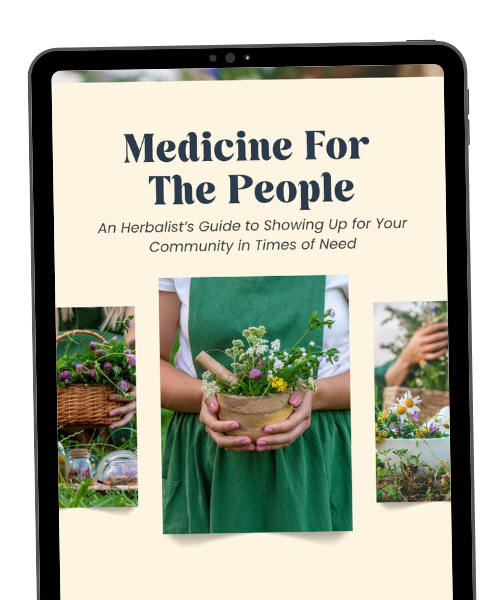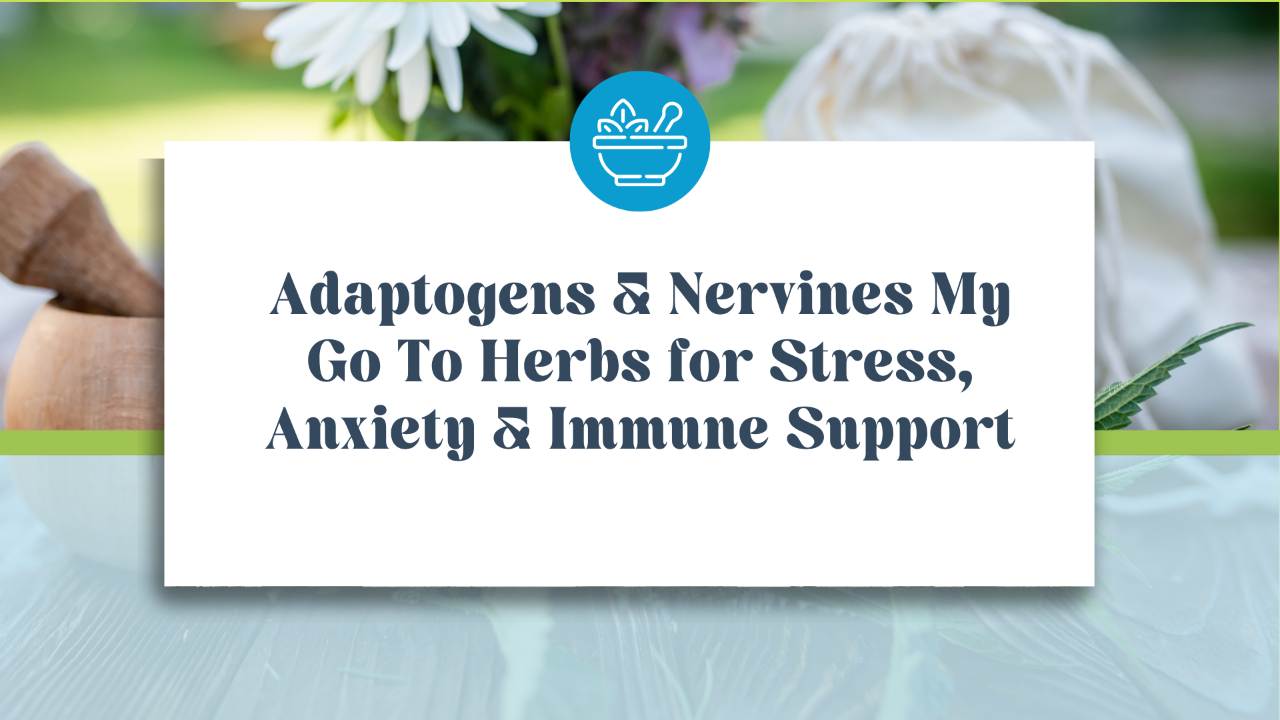Herbal First Aid Essentials

You don’t have to get stuck in an emergency without everything you need for your herbal first aid kit. Seriously, there’s nothing worse than that feeling when you hear your kid crying loudly off in the distance. That sense of panic, “Oh No! What happened now!?!” And it’s even worse when you’re not prepared for it, and you have to run off for some emergency help. That’s why in this podcast, I’m dishing out some of my absolute essentials for a natural first aid kit.
Why Herbal First Aid?
Maybe you’re wondering, why you should bother with herbal first aid when you can just buy products off the shelf? Truth is, you can make yours even better than that stuff, and at a fraction of the cost! And, who couldn’t use that these days?
In fact, it was first aid that actually got me into the world of herbalism! (cue the story time music…)
Back in the late 1900s and early 2000s, I was a backpacking guide and wilderness therapist. I loved being outside, connected to nature, and helping others do the same. But one thing I hated was seeing my guests carrying toxic first aid products that were not only bad for them but also terrible for the environment.
That's when the plants called out to me, and let me know they were here for healing, and my entire world became herbalism from there…
I started making my own herbal remedies and sharing them with my community. People loved them and kept coming back for more. Eventually, I even got my products into REI, the mecca for outdoor enthusiasts. It was a dream come true!
After over a decade of running a product line, I realized my true passion lay in education—teaching others how to use plants as medicine. In fact, I teach Herbal First Aid Skills class where I share these essentials, and tried and true recipes super similar to what I sold in REI. You can dive deeper here, if you’re ready to learn these essential life skills.
Essential Herbs for Your First Aid Kit
So, let’s get to the good stuff. Here are some of my absolute favorite herbs that I think everyone should have in their herbal first aid kit.
Plantain: The Wound Healer
Plantain is a weed that grows everywhere—sidewalk cracks, parks, you name it. Don't underestimate this humble plant; it's a powerhouse for wound healing. It's great for bug bites, bee stings, spider bites, and even snake bites. Plantain has an amazing ability to draw out venom and infection. It’s also fantastic for wound healing, speeding up the process and helping new skin cells regenerate quickly. Always have some plantain in your first aid kit!
Lavender: The Ultra Cool Multi-Tasker
I'm usually all about whole plant medicine, but lavender essential oil deserves a special mention. It’s an antiseptic, making it great for cuts and scrapes. Lavender is also wonderful for burns, headaches, and even calming down anxiety in emergency situations. Lavender essential oil is small and efficient, perfect for your first aid kit.
Echinacea: The Infection Fighter
Most people know echinacea as an immune booster, but it's also a fantastic antimicrobial herb. You can use echinacea tincture diluted in water as a wound wash to fight off bacteria and speed up healing. It’s also great for immune support if someone gets ill while you’re out and about.
Comfrey: For The Sprains & Strains
Comfrey, also known as knit bone, is amazing for sprains, strains, and broken bones. It speeds up the healing process but be cautious—if you use it too early, it can cause bones to heal out of alignment. Comfrey is also excellent for wound healing, just make sure to use it with something like plantain to prevent infection.
Yarrow: Stop Bleeding FAST!
Yarrow is an absolute superhero for stopping bleeding. It's an antimicrobial and a fantastic wound healer. It grows easily and is always good to have in your first aid kit. Yarrow can stop bleeding almost instantly and fight off bacteria at the same time, making it a must-have.
Essential Herbal Safety Tips
Before you head out to gather your herbal first aid kit, here are a few safety tips to keep in mind:
- Proper Identification:** Make sure you can identify your plants accurately. Misidentifying a plant can lead to serious consequences.
- Check for Allergies:** Always check for any potential allergies to herbs.
- Respect Dosage:** Be mindful of dosage and the form in which you’re using the herb.
- Sustainable Harvesting:** Only harvest what you need and do so in a way that doesn't harm the environment.
Wanna Learn More?
If you’re excited to dive deeper into the world of herbal first aid, I’ve got a whole course available for you here! And if you love that stuff, inside my Apothecary Mama herbal mentorship community, we do deep-dive workshops every month, covering everything from cuts and scrapes to burns and bug bites. There’s something for everyone, whether you’re just starting out or looking to become a community herbalist.
Check out these resources and feel free to reach out if you have any questions. I’d love to hear from you!
Thank you so much for tuning into The Herbalist's Path blog. Your journey to making herbalism spread like wildflowers starts here. Keep learning, keep sharing, have fun, and don’t hesitate to reach out if you need help.
Do You Have The Right Remedies On Hand?
Whether it’s a tummy ache, sleepless nights, or boosting immunity, The Ultimate Guide to Stocking Your Natural Medicine Cabinet has the top-quality remedies you need. Tested by a clinical herbalist—and her kid too!
Grab your guide below👇🏼
We hate SPAM. We will never sell your information, for any reason.







